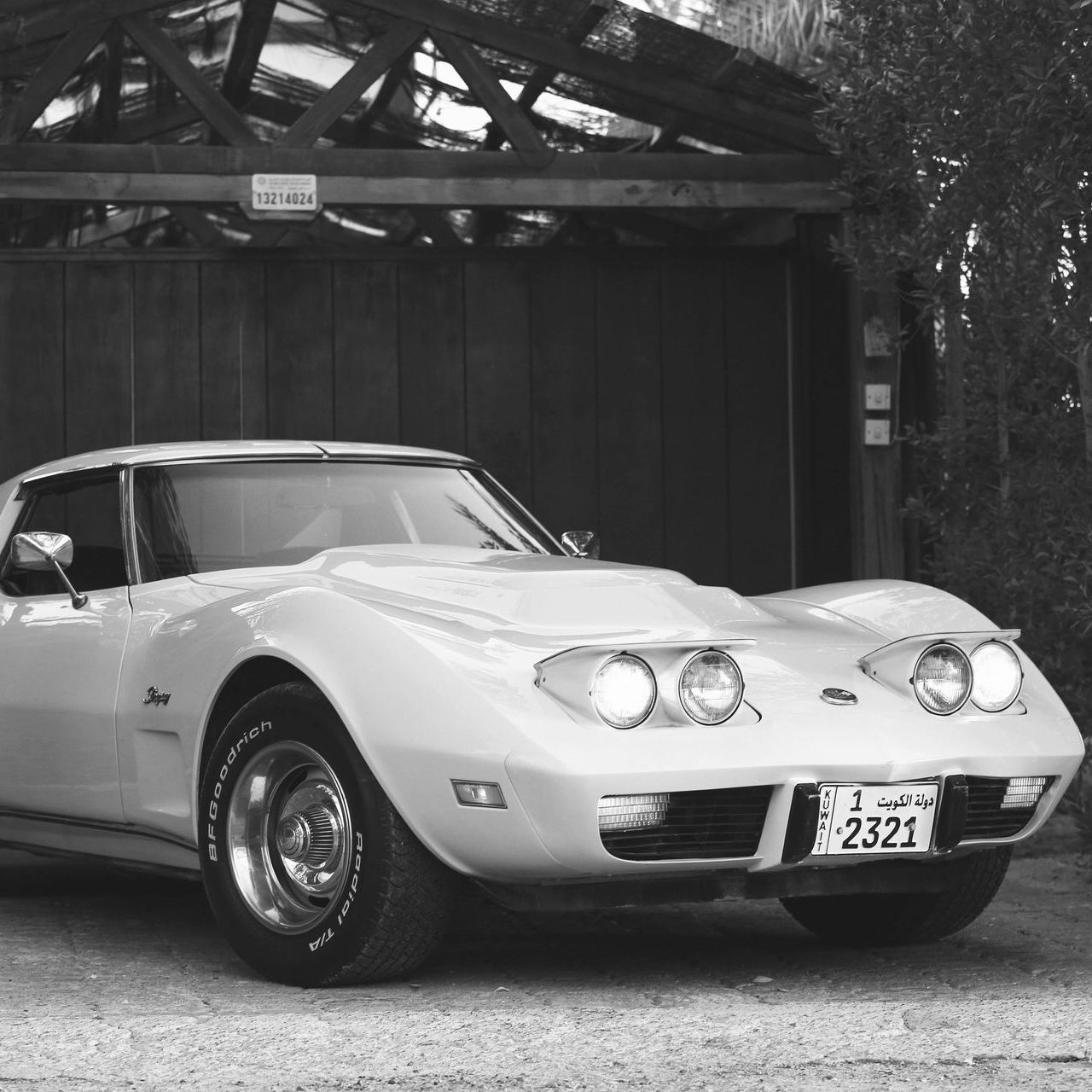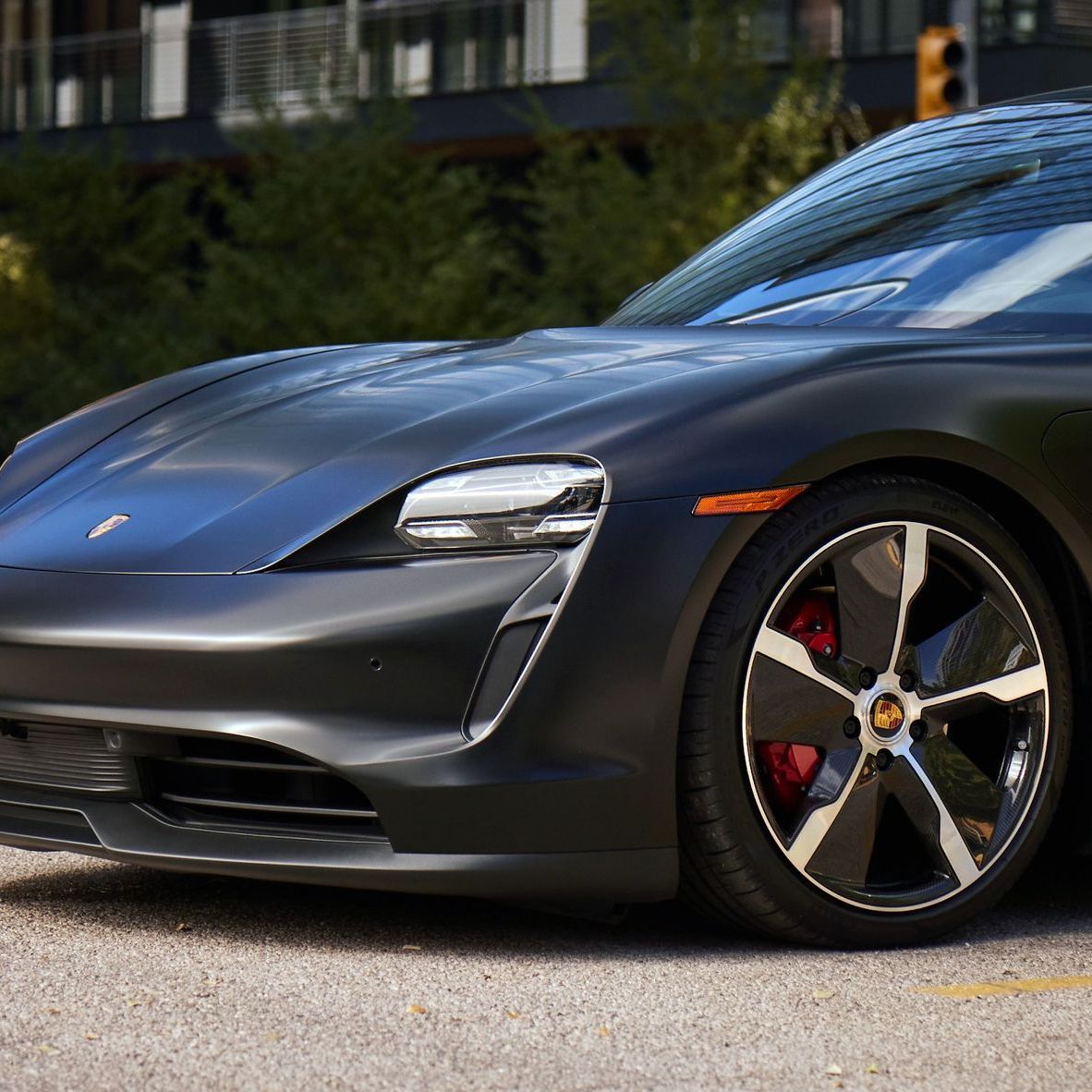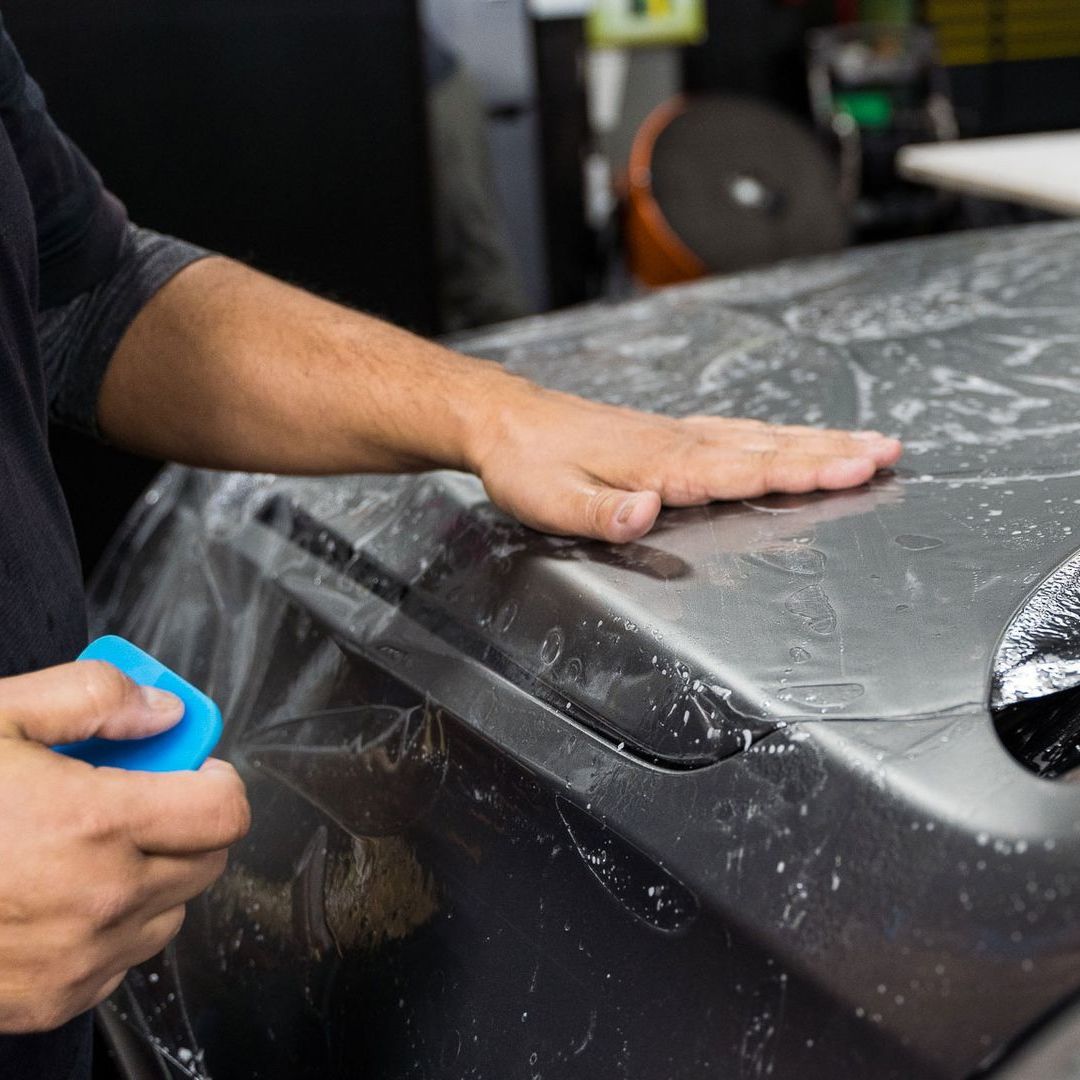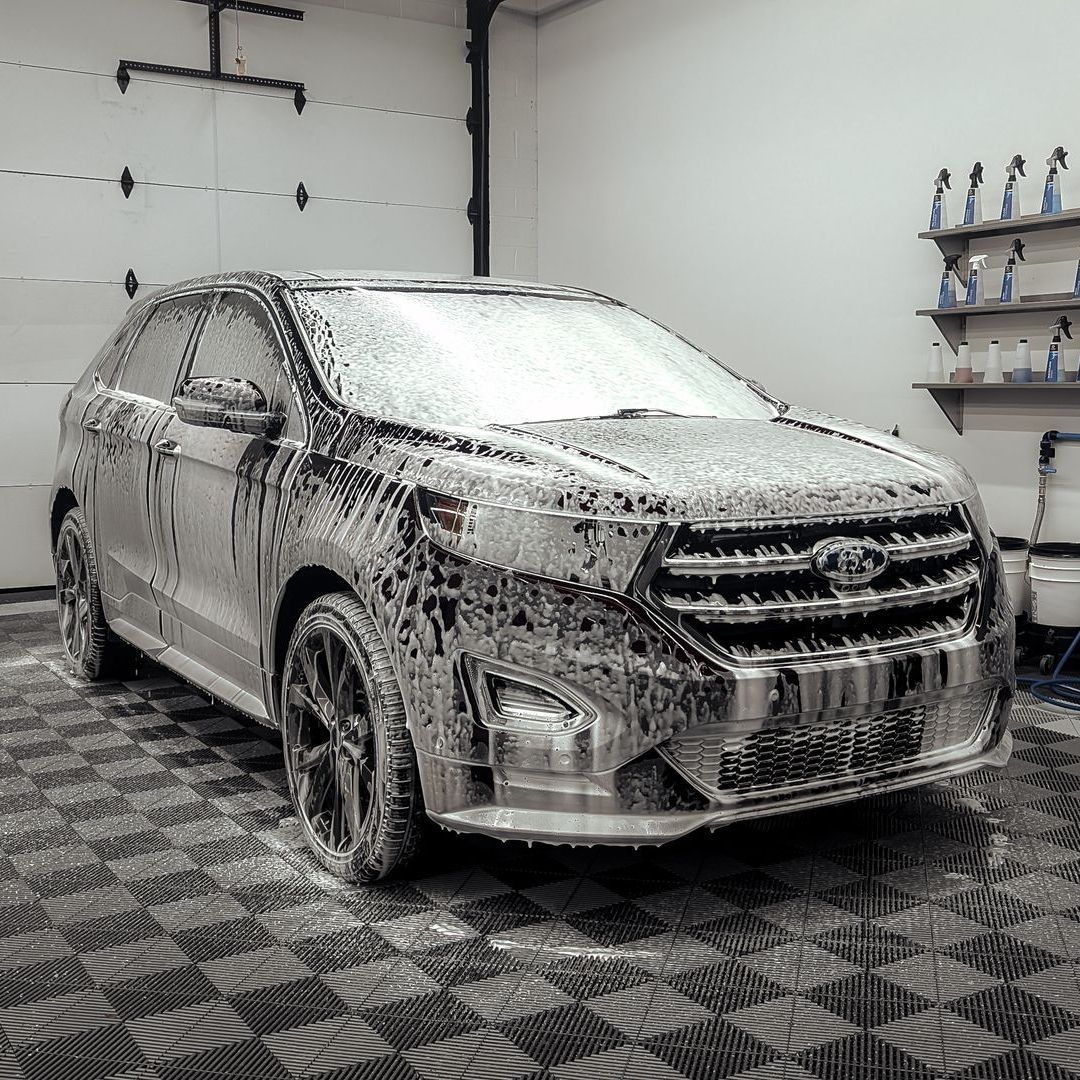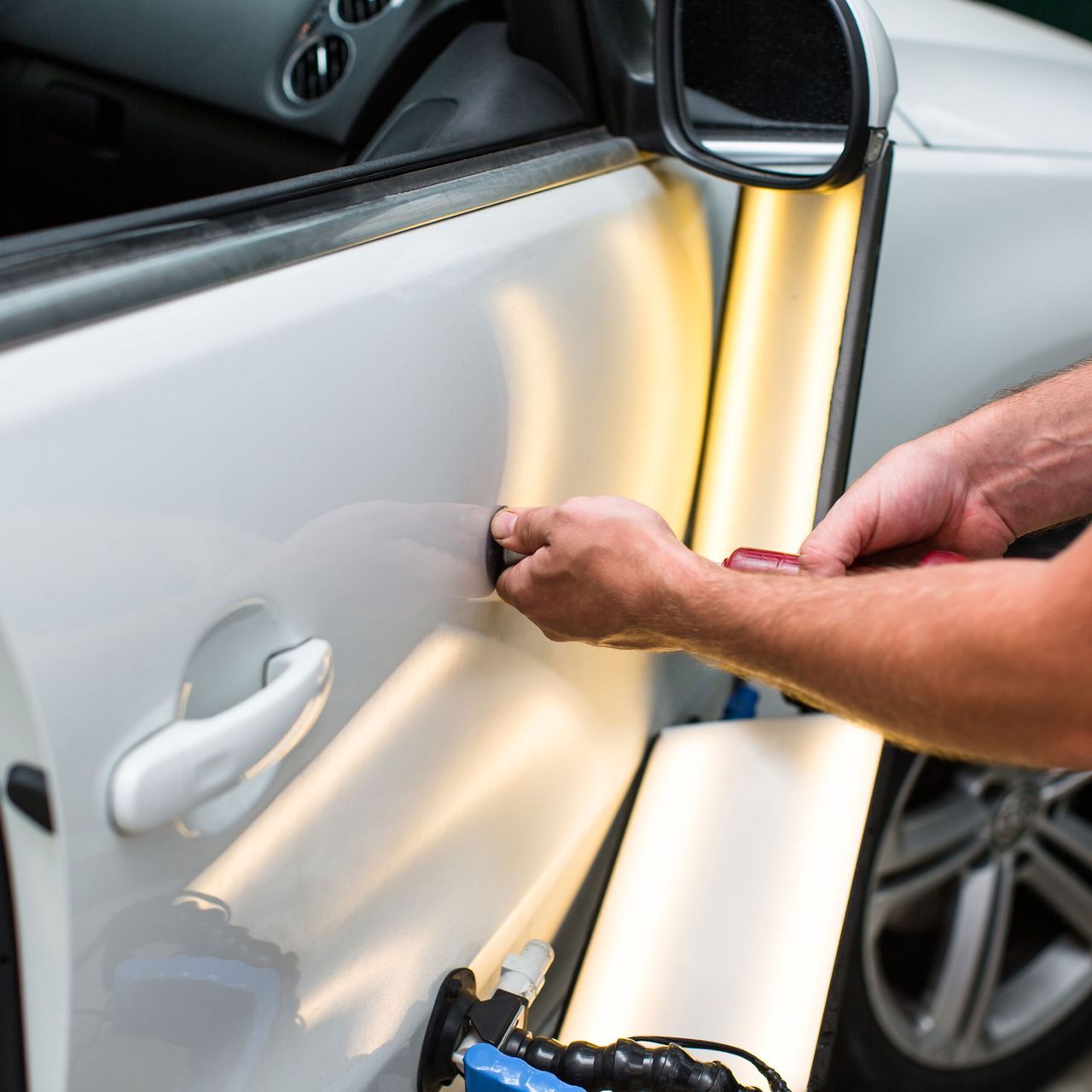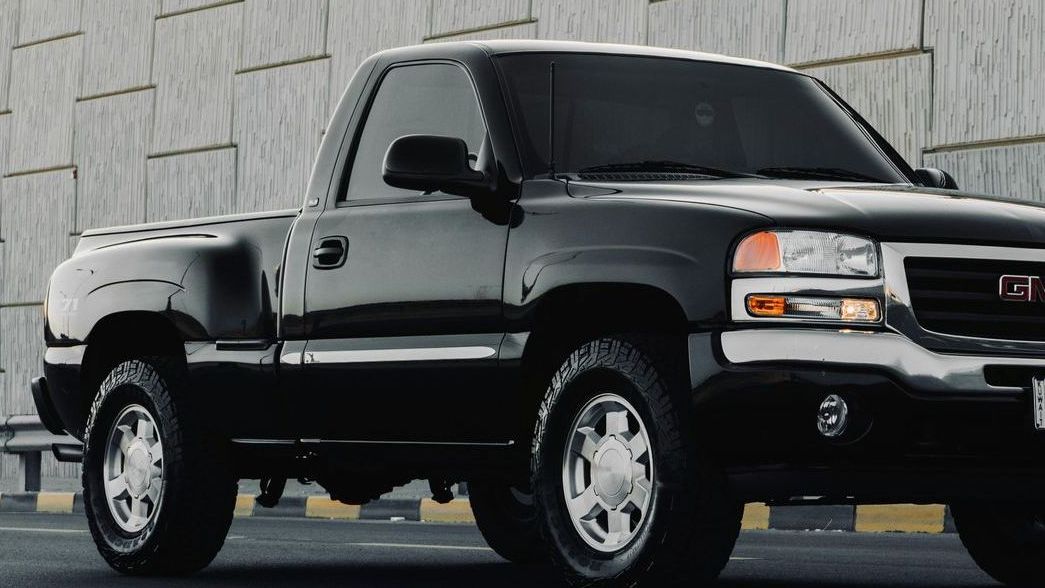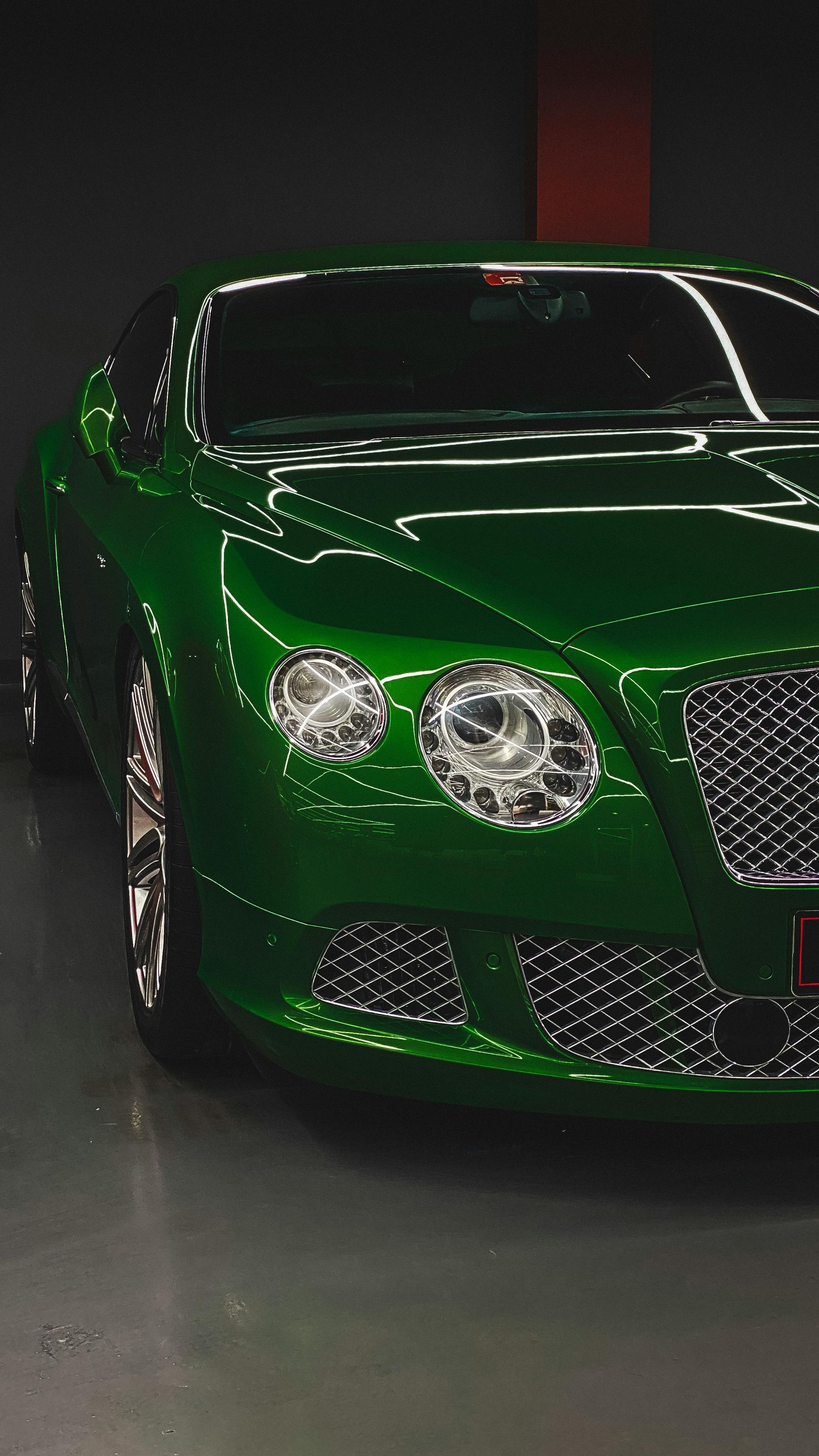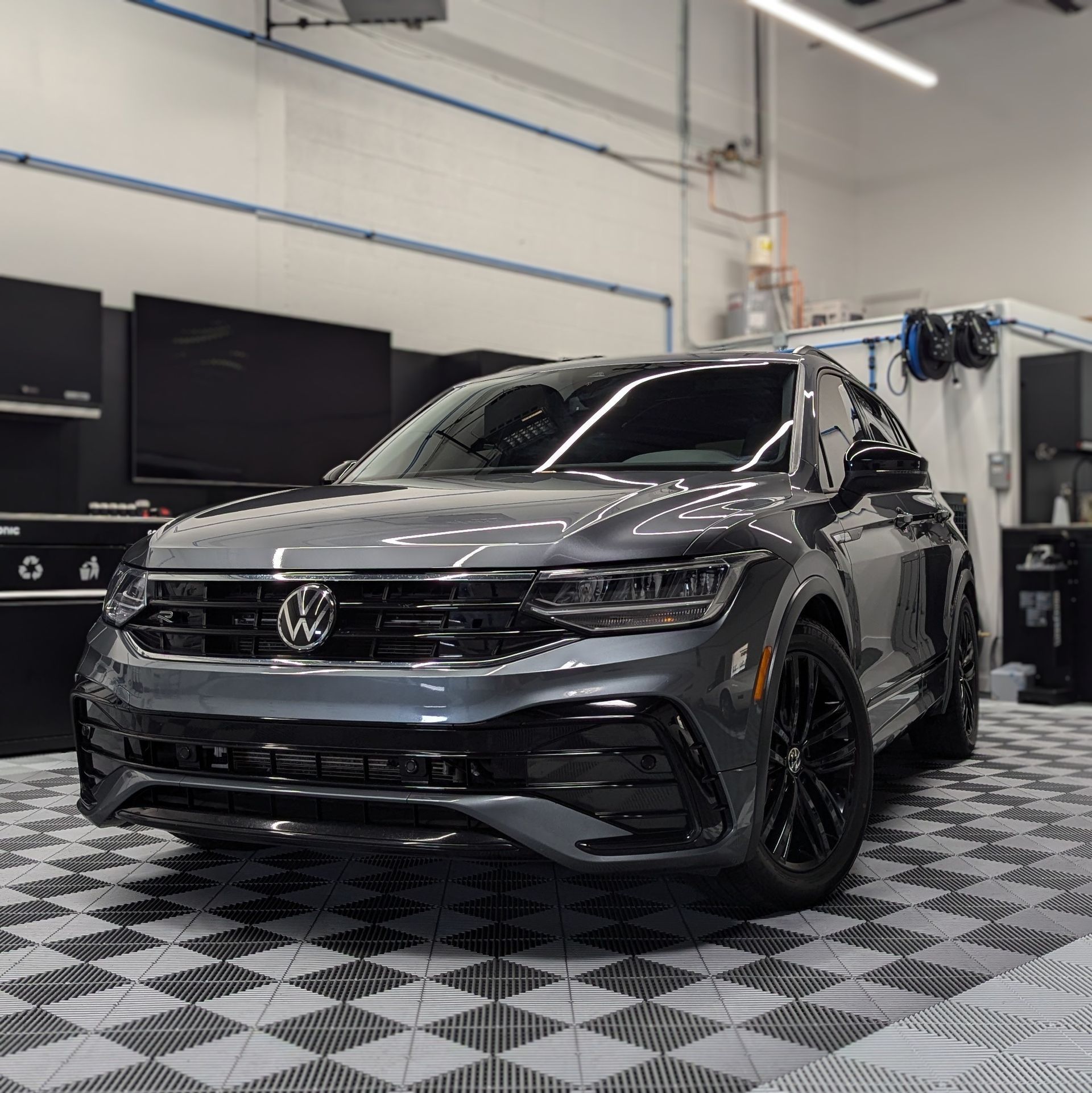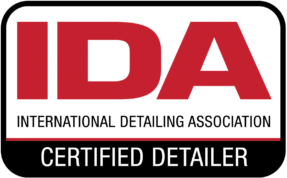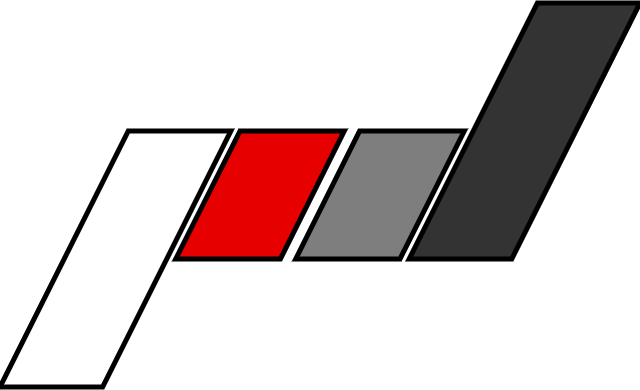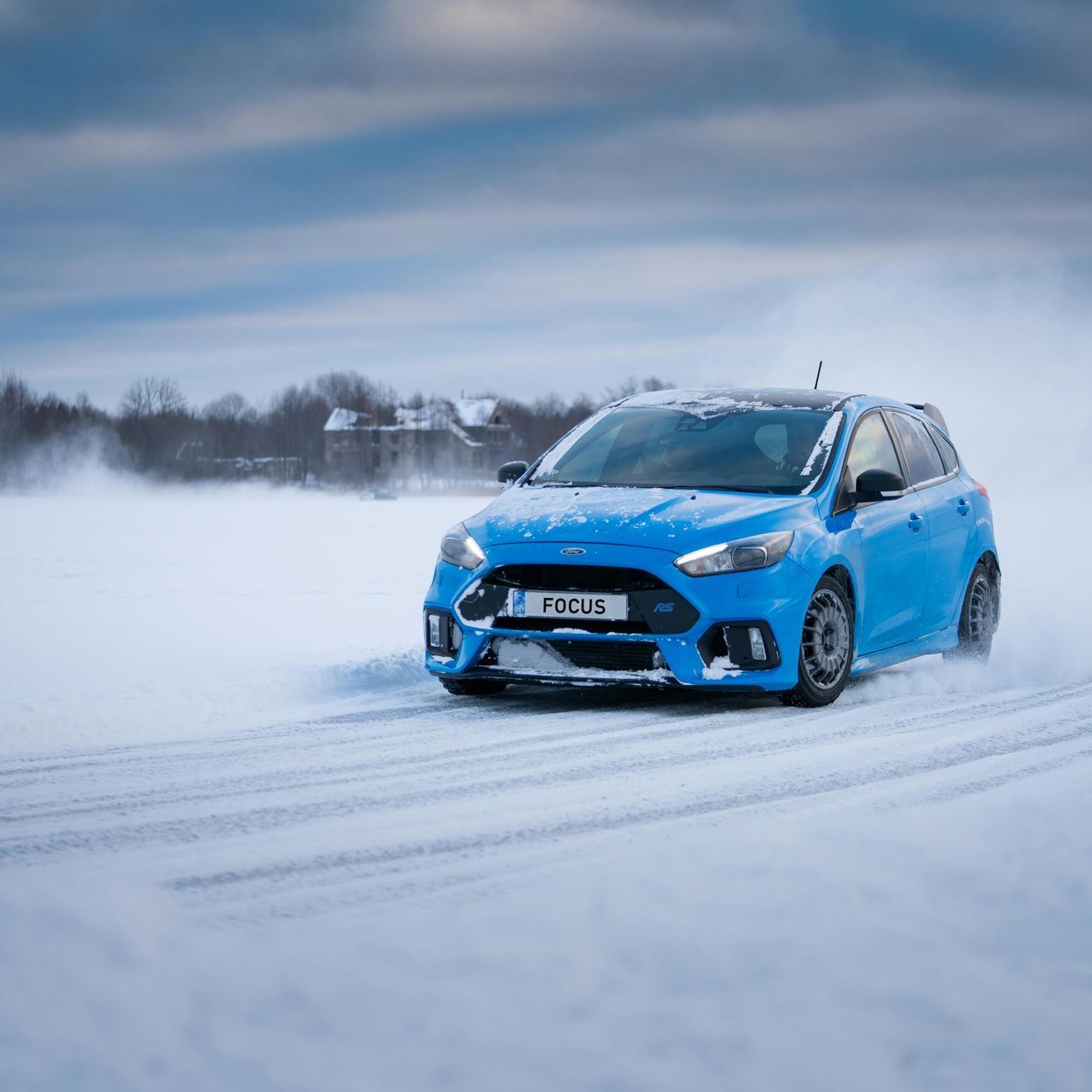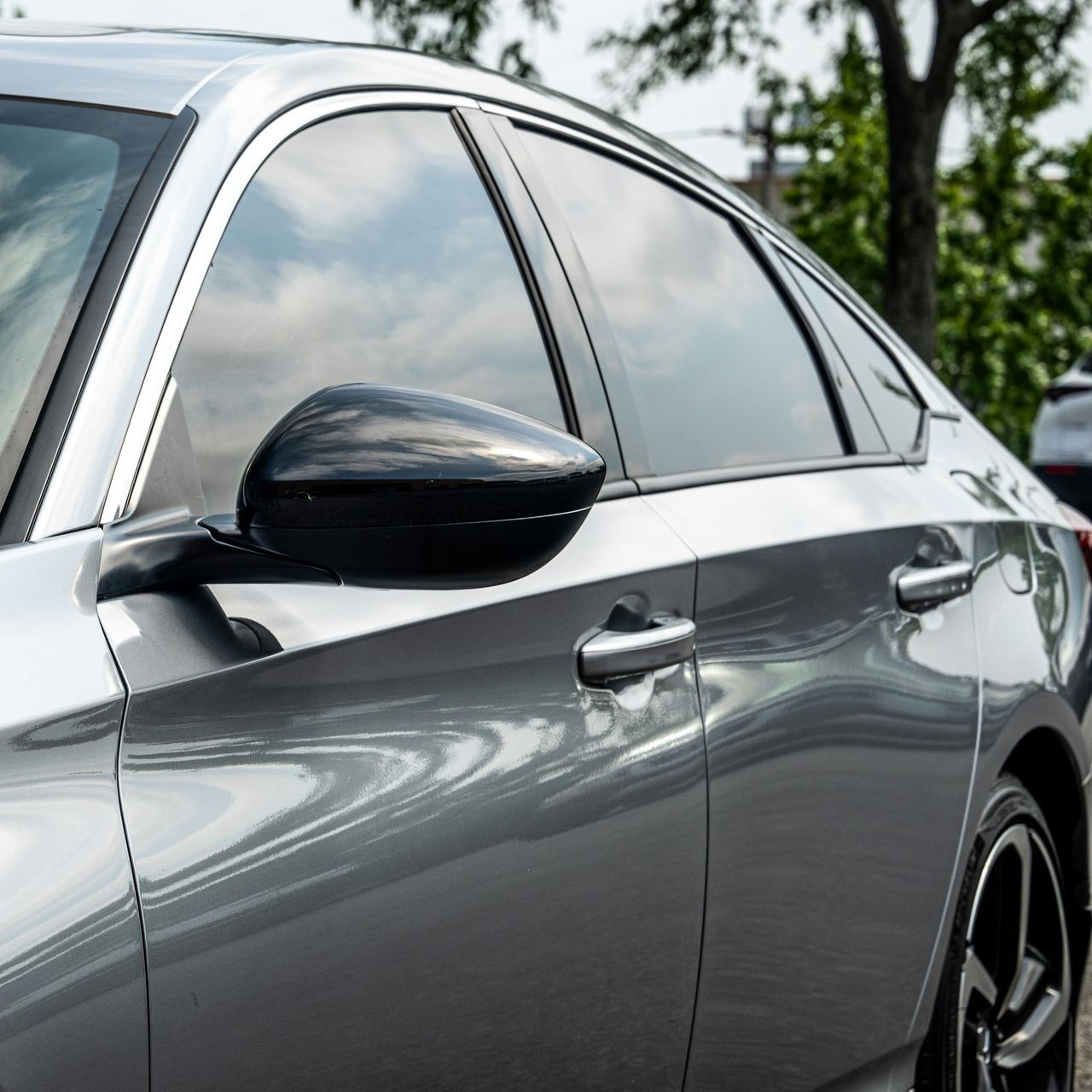By Davis McCarel
•
October 16, 2024
PPF vs. Ceramic Coating: Which One is Right for Your Vehicle? For car enthusiasts and everyday drivers alike, protecting your vehicle’s paint is an important investment. Exposure to road debris, harsh weather, and environmental contaminants can lead to scratches, chips, and fading over time. Fortunately, the automotive world offers a range of vehicle protection options, with Paint Protection Film (PPF) and ceramic coating emerging as two of the most popular solutions. Both offer excellent protective qualities, but they serve different purposes and suit different needs. Understanding the key differences between PPF and ceramic coating will help you make an informed decision about which one is right for your car. In this detailed guide, we'll explore everything you need to know about PPF vs ceramic coating—what they are, how they work, their benefits, limitations, and cost considerations. By the end, you should have a clear understanding of which protection method suits your vehicle, driving habits, and maintenance preferences best. What is Paint Protection Film (PPF)? Paint Protection Film (PPF), also known as clear bra or clear film, is a transparent, flexible film that is applied to your vehicle’s painted surfaces to protect them from external damage. Originally developed for military use, PPF has advanced significantly over the years and is now a highly effective solution for cars. The film is made from a thermoplastic urethane material, which is self-healing and can absorb minor scratches, abrasions, and impacts. When PPF is applied, it forms a protective layer over the paint, preventing damage from rocks, road debris, and other environmental hazards. Unlike traditional clear coats, PPF offers a thicker barrier that absorbs the impact of small objects, effectively shielding the paint beneath. Because of its thickness and durability, PPF is typically applied to high-impact areas of a vehicle, such as the front bumper, hood, side mirrors, and fenders, but it can also be used for full-body coverage. One of the standout features of PPF is its self-healing property. The film can "heal" itself when exposed to heat, allowing minor scratches and swirl marks to disappear over time. This means that even after months or years of driving, your car can maintain a flawless, smooth finish. Additionally, high-quality PPF offers UV protection, preventing the paint from fading due to prolonged sun exposure. What is Ceramic Coating? Ceramic coating is a liquid polymer solution that is applied to the exterior of a vehicle. When applied, it chemically bonds with the car’s factory paint, creating a semi-permanent layer of protection. Unlike waxes or sealants, which sit on top of the paint, ceramic coatings form a durable bond that does not wash away or break down over time. The result is a glossy, hydrophobic surface that repels water, dirt, and other contaminants. One of the key benefits of ceramic coating is its hydrophobic property, which makes water bead up and slide off the surface, taking dirt and grime with it. This makes it much easier to keep your car clean, as contaminants are less likely to adhere to the surface. Additionally, ceramic coatings offer UV protection, which helps prevent paint oxidation and fading, keeping your car looking vibrant and new. While ceramic coating is not a physical barrier like PPF, it does provide a strong level of protection against minor scratches, swirl marks, and chemical contaminants. It enhances the paint's gloss and shine, giving your vehicle a deep, polished look. Ceramic coatings can last anywhere from two to five years, depending on the quality of the product and how well the car is maintained. Regular washing and maintenance will extend the life of the coating, ensuring that your car continues to look its best. Key Differences Between PPF and Ceramic Coating When considering PPF vs ceramic coating, it's essential to understand the key differences between the two. Both offer vehicle protection, but they do so in different ways and are suited for different types of drivers. Material and Application : PPF is a thick, flexible film that is physically applied to the car's exterior, creating a protective barrier. It can absorb impacts from road debris and small objects, which means it physically prevents chips and scratches. Ceramic coating, on the other hand, is a liquid polymer that bonds with the car’s paint. It does not form a thick barrier but instead creates a smooth, hydrophobic surface that repels water and dirt. Protection Level : PPF offers the highest level of physical protection. If your vehicle is frequently exposed to gravel, road debris, or other high-impact hazards, PPF is the better choice. It can absorb impacts, preventing chips, scratches, and other physical damage. Ceramic coating provides a more surface-level protection. It does not prevent impacts, but it does protect against minor abrasions, oxidation, UV rays, and chemical contaminants. Self-Healing Properties : One of the unique features of PPF is its self-healing capability. When exposed to heat (from the sun or a heat gun), the film can smooth out and eliminate minor scratches. This makes PPF particularly appealing for drivers who want to maintain a flawless appearance without constantly worrying about scratches. Ceramic coatings do not have self-healing properties, but they do protect against minor scratches and swirl marks by making the surface smoother and more resistant to abrasion. Aesthetic Benefits : Both PPF and ceramic coating enhance the appearance of your vehicle, but they do so in different ways. PPF is typically clear and glossy, and when applied correctly, it is nearly invisible. It preserves the original look of your paint while adding a layer of shine. Ceramic coatings are known for their deep, mirror-like gloss. They make the paint appear more vibrant and reflective, giving your car a showroom finish that lasts for years. If you’re looking for a super glossy, polished look, ceramic coating might be the better option. Benefits of Paint Protection Film (PPF) Superior Physical Protection : PPF offers unmatched protection against chips, scratches, and dings. It is an excellent choice for those who frequently drive on highways, gravel roads, or areas with a lot of construction. The film acts as a physical barrier, absorbing the impact from small rocks, pebbles, and other debris, preventing damage to your vehicle’s paint. Self-Healing Technology : One of the standout features of PPF is its ability to heal itself when exposed to heat. This means that minor scratches and abrasions will disappear over time, keeping your car’s surface smooth and scratch-free. This self-healing property can significantly reduce the need for paint correction services, saving you money in the long run. UV and Chemical Protection : High-quality PPF also provides excellent UV protection, preventing your car’s paint from fading due to sun exposure. Additionally, it protects against chemical contaminants like bird droppings, bug splatter, and road salt, which can cause long-term damage to the paint if not removed promptly. Durability : PPF is designed to last. Depending on the quality of the film, it can provide protection for five to ten years, making it a long-term investment. Once applied, you won’t need to worry about reapplying it frequently, and it will continue to protect your vehicle for years. Benefits of Ceramic Coating Enhanced Gloss and Shine : One of the primary reasons people choose ceramic coating is for the aesthetic appeal. The coating gives the car a high-gloss finish, enhancing the color depth and making the paint look richer and more vibrant. The glossy, mirror-like appearance is perfect for those who want their car to stand out. Hydrophobic Properties : Ceramic coating is highly water-repellent, which means that water beads up and rolls off the surface, taking dirt, grime, and other contaminants with it. This makes washing your car easier and reduces the frequency of cleaning. The hydrophobic effect also prevents water spots, keeping your car looking clean and shiny for longer. UV and Oxidation Protection : Like PPF, ceramic coating also protects against UV rays, preventing the paint from fading and oxidizing. Over time, exposure to the sun can cause the paint to become dull and faded, but ceramic coatings help preserve the original color and finish. Ease of Maintenance : Ceramic coatings are often referred to as “sacrificial layers” because they take the brunt of environmental exposure, keeping your car’s clear coat in better condition. With a ceramic coating, you won’t need to wax your car regularly, as the coating itself provides a long-lasting shine. Routine washing is usually all that is needed to keep the car looking great. Which One Should You Choose? The choice between PPF vs ceramic coating ultimately depends on your specific needs, driving habits, and what you want to achieve with your vehicle protection. Both options have their unique benefits, and in some cases, a combination of both may be the best solution. Choose PPF If : Your car is frequently exposed to road debris, gravel, or other physical hazards. If you drive on highways regularly, travel in areas with construction, or park in places where your vehicle might be at risk of getting bumped or scratched, PPF offers superior physical protection. It’s also an excellent option for high-impact areas like the front bumper, hood, and side mirrors, where most chips and scratches occur. Choose Ceramic Coating If : You want to enhance your car’s appearance with a deep, glossy finish and want to make routine maintenance easier. Ceramic coatings are perfect for those who prioritize aesthetics and want their vehicle to have a showroom shine all year long. If your car is primarily exposed to UV rays, rain, and dirt, ceramic coating will protect the paint and make it easier to clean, without the need for frequent waxing.
